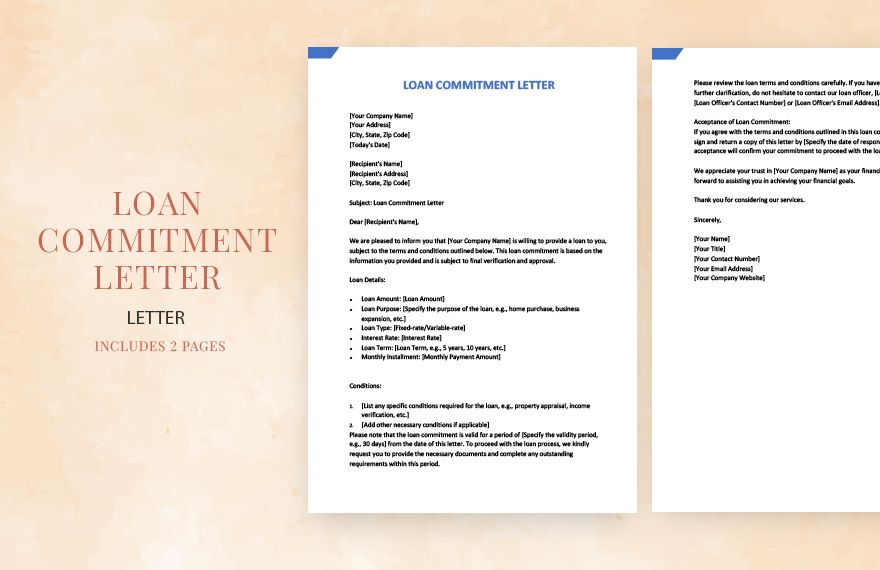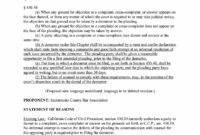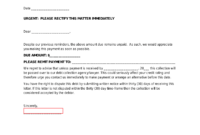Buying a home is often the biggest financial decision most of us will ever make, and it comes with a lot of paperwork. Among the crucial documents you’ll encounter during this journey is the mortgage loan commitment letter. It’s a significant milestone, a moment of relief, and a clear signal that your dream of homeownership is well within reach, provided you meet certain conditions.
But what exactly is this letter, why is it so important, and how can understanding a mortgage loan commitment letter template help you navigate the final stages of securing your home loan? Let’s dive into the details and demystify this critical piece of the home-buying puzzle, ensuring you’re well-prepared for what comes next.
Understanding the Mortgage Loan Commitment Letter
Think of the mortgage loan commitment letter as your lender’s formal promise to fund your home loan. After you’ve applied for a mortgage, provided all your financial documentation, and gone through the initial underwriting process, the lender will issue this letter. It’s not just a casual agreement; it’s a legally binding document that outlines the specific terms and conditions under which your loan will be approved and ultimately disbursed. This letter essentially gives you, the borrower, the confidence to proceed to closing, knowing the financing is firmly in place.
For both the homebuyer and the seller, this document is incredibly important. For you, it confirms that your financing is secured, allowing you to move forward with things like appraisals, inspections, and setting a closing date. For the seller, it provides assurance that the deal is solid and not likely to fall through due to financing issues. It’s a crucial step that validates the entire loan application process, confirming that the lender has reviewed your financial health and decided you’re a suitable candidate for the loan under specific conditions.
A typical commitment letter will detail the loan amount, the interest rate (whether fixed or adjustable), the loan term, and any specific conditions you need to meet before the loan can officially close. These conditions might include things like providing updated bank statements, proof of employment, a satisfactory appraisal, or clearing up any outstanding debts. It’s imperative to read every word of this letter carefully, as any unmet conditions could delay or even jeopardize your closing.

Key Components of the Commitment Letter
- Loan Amount and Terms: Clearly states the principal amount of the loan, the interest rate (APR), and the repayment schedule (e.g., 30-year fixed).
- Conditions for Closing: A list of all outstanding requirements that must be satisfied before the loan can be finalized. This often includes a property appraisal, title search, and proof of homeowners insurance.
- Expiration Date: The date by which all conditions must be met and the loan must close. If this date passes, the commitment might be rescinded.
- Loan Type: Specifies if it’s a conventional, FHA, VA, or USDA loan, along with any relevant program details.
- Escrow Details: Information regarding property taxes and homeowners insurance that will be collected and held in an escrow account.
Understanding each of these components is vital. It’s not just a formality; it’s your roadmap to closing. If anything in the letter seems unclear or incorrect, don’t hesitate to reach out to your loan officer immediately for clarification. Addressing discrepancies early can save a lot of headaches later on and ensures a smooth path to homeownership.
Navigating the Process: From Application to Commitment
The journey to receiving your mortgage loan commitment letter begins much earlier, right when you submit your initial loan application. This initial phase involves providing a comprehensive picture of your financial life: income, assets, debts, and credit history. The lender uses this information to pre-approve or pre-qualify you, giving you an estimate of how much you might be able to borrow. While these initial steps are exciting, they are just the groundwork for the more rigorous process that leads to a formal commitment.
Once your application is in, it moves into the underwriting stage. This is where the lender thoroughly verifies all the information you’ve provided. Underwriters meticulously examine your financial stability, employment history, creditworthiness, and the property itself. They’re looking for any potential risks and ensuring that your application adheres to all lending guidelines. This stage can feel a bit like detective work, with requests for additional documents or clarifications, but it’s a necessary step to ensure the loan is a sound investment for the lender and a manageable debt for you.
After the underwriting process is complete and satisfactory, that’s when the highly anticipated mortgage loan commitment letter is issued. This is your green light, signifying that the lender is prepared to fund your loan. However, remember it’s usually a conditional approval. You still have to meet all the stipulations outlined in the letter before your loan can move to the closing table. Carefully review each condition and work diligently with your loan officer to fulfill them promptly. Missing deadlines or failing to provide required documents can cause significant delays.
To ensure a smooth transition from receiving your commitment letter to closing, keep these tips in mind:
- Review Immediately: Read the entire letter as soon as you receive it. Understand every term and condition.
- Clarify Doubts: If anything is unclear, ask your loan officer for explanations. Do not assume.
- Act Promptly: Address all conditions quickly. Gather any requested documents without delay.
- Avoid Major Financial Changes: Refrain from making big financial decisions like changing jobs, taking on new debt (e.g., buying a car), or opening new credit lines. These can alter your financial profile and potentially jeopardize your loan.
- Communicate: Stay in close communication with your lender and real estate agent throughout this final phase.
By staying proactive and meticulously addressing all the conditions, you can ensure that your commitment letter transitions smoothly into a fully funded mortgage. This diligent approach will help you avoid last-minute surprises and ensure a stress-free closing experience, putting the keys to your new home in your hand without unnecessary complications.
The mortgage loan commitment letter is more than just a piece of paper; it’s a pivotal document in your home-buying journey. It represents the culmination of your efforts in the application process and the lender’s stamp of approval, providing a clear path forward to closing. Understanding its components and the conditions within it empowers you to navigate the final steps with confidence and clarity, ensuring you’re fully prepared for what’s ahead.
As you approach this exciting final stage, remember that meticulous attention to detail and proactive communication with your lending team are your best allies. With this knowledge, you can approach your home closing feeling informed and secure, ready to embark on the next chapter of homeownership without any unexpected hitches.



